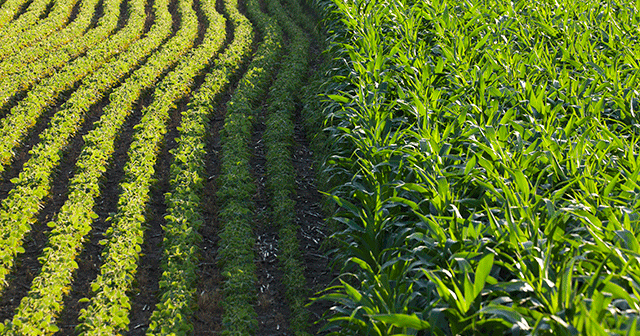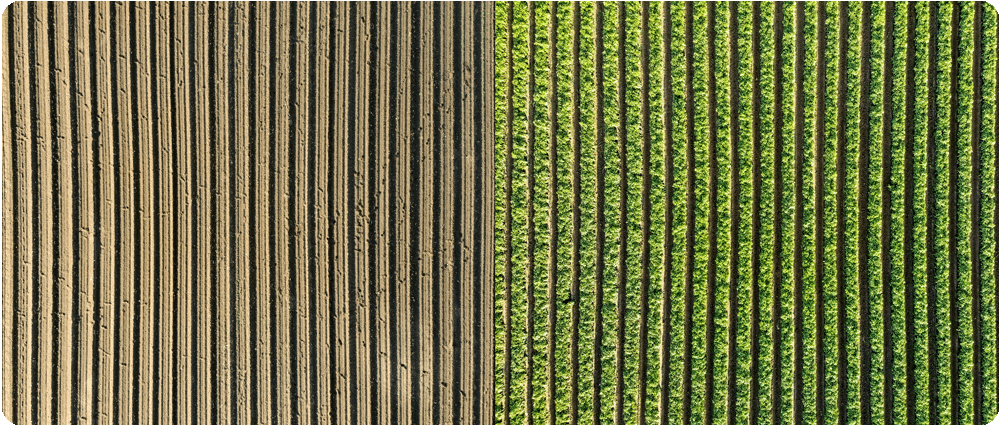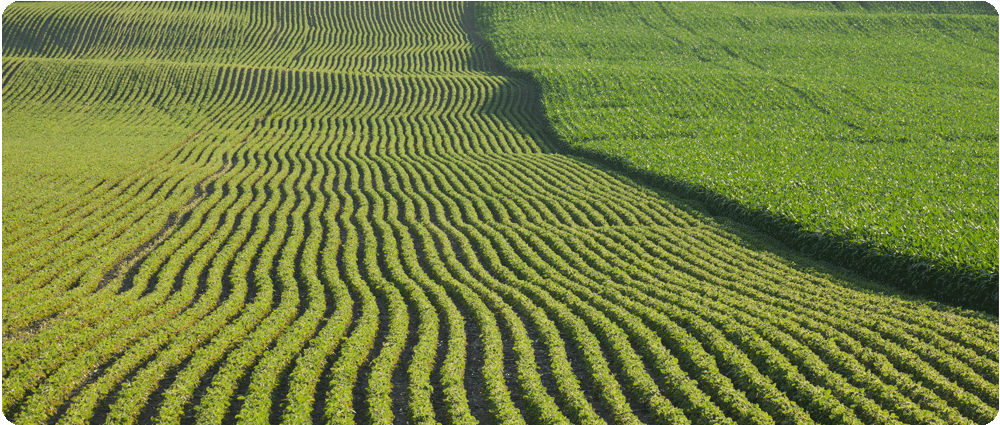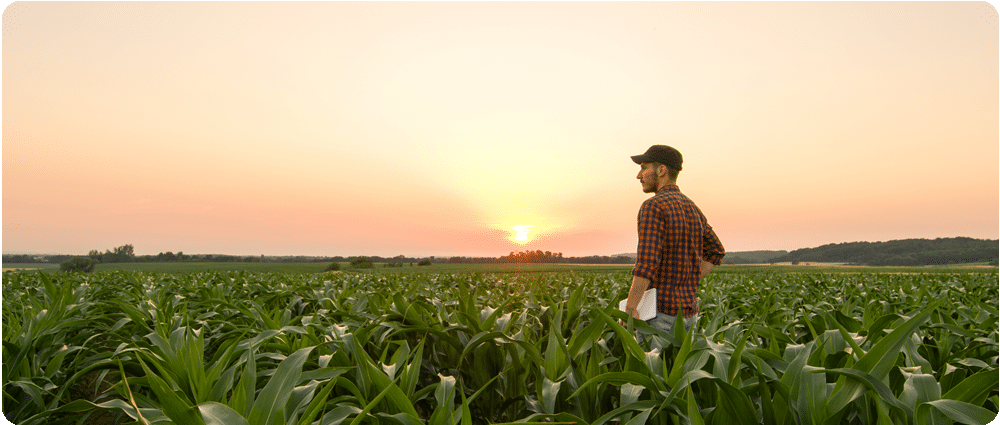What Is The Difference Between Crop Rotation And Intercropping?

The agricultural industry has changed a lot throughout human history. After the industrial revolution and modern machinery’s invention like the tractor nearly 150 years ago, we have advancements like never before. As a modern farmer in 2021, you likely rely on agricultural weather and market data to become a top producer.
Two of the most common and time-tested farming methods include crop rotation and intercropping. They are similar and sometimes overlap in both use and benefits employed by farmers for thousands of years.
What are the definitions of crop rotation and intercropping, and what is the difference between them? Let’s take a more in-depth look at how these practices affect modern farming.

What is crop rotation?
True to its name, crop rotation is a method of rotating different crops in a field across different growing seasons. Yields can be changed every season or after a set number of seasons.
There are many reasons why crop rotation is used by farmers the world over. One of the primary reasons is to promote soil health.
Different crops need different levels of nutrients from the soil. Tomatoes, for example, take nitrogen from the soil to grow. If tomatoes (or similar crops) are planted in the same field for successive growing seasons, the soil can become unhealthy and nitrogen depleted.
On the other hand, Beans are a top producer of nitrogen to the soil when they grow. When you rotate a field between growing these two crops, it helps regulate the soil’s nutrients and keep it healthy and productive.
History of crop rotation
While there are different methods used today, crop rotation’s fundamental principles have been used for thousands of years. The Bible book of Leviticus portrays a basic practice of crop rotation where every seven years, the land was left bare to “rest.” China has also practiced crop rotation since ancient times.
For example, in a two-field system, one side of the field was planted and harvested while the other half was left bare. Farmers used a three-field system to plant and harvest one crop (such as wheat and barley) in one-third of the land, a different crop (such as peas and beans) in another third, while the final third was left bare.
Some large farms today use complex crop rotation systems of more than 12 crops. This crop rotation practice can also be used in succession for crops with different growing seasons to make full use of the field space.

What is intercropping?
While similar to crop rotation, intercropping refers to growing different crops in the same area during the same season. Various techniques are used for intercropping, the most common being planting the crops in alternate rows or strips.
Of course, because the crops will be growing together, considerations must be made to ensure they will complement each other. For example, you might pair a crop that grows tall with a shorter crop that needs a shaded environment to grow.
You don’t want your crops to compete with each other. Your goal is to promote a large yield, not stifle it! Because the crops are growing alongside each other, you want to make sure that the vegetables you choose do not negatively affect each other.
Many farmers combat this by growing crops with a shorter root system alongside those with a deeper root system, so they aren’t competing for nutrients. With the right research and preparation, you can choose the best intercropping crops that will be mutually beneficial and maximize your returns.
History of intercropping
Intercropping has a long history in the agricultural world. As long as 5000 years ago, Indigenous farmers in North America were planting corn, beans, and squash together, still practiced today.
These crops, also known as the “Three Sisters,” worked well with each other; the corn provided stability for the beans, and the beans and corn provided shade for the squash.
Historically, the farmer would plant each of the seeds in the same hole and allow the crops to grow together until cultivation. Some of the crops matured in different seasons, allowing the farmer to ensure that he would have crops ready to use and sell during three different seasons.
How crop rotation and intercropping can make you a top producer
There’s a reason farmers have used these methods for thousands of years – they work! While there have been advancements in digital agriculture, there are still many advantages to the age-old practices of crop rotation and intercropping.
Here are three benefits of using these methods on your farm:
Fewer weeds
Weeds are every farmer’s enemy. Thankfully, both crop rotation and intercropping strategies can help reduce the number of weeds that you have to deal with in your field.
Fewer pests
Just like each person has a favorite dish, certain pests and diseases tend to attack certain crops. By increasing the variety of crops in your field, whether by crop rotation or intercropping, you can disrupt the life cycle of pests.
Better for the environment
This benefit is a byproduct of the first two. Many farms today use pesticides to increase their yield and, in turn, increase profits. If you’re able to reduce pests and weeds in your field, you won’t need to use the same amount of pesticide to control the problem.
Crop rotation and intercropping methods increase the health of your soil, improving fertility without the use of fertilizers, making your farm better for you and the environment.

How can I learn more to become a top producer in the agricultural industry?
Being a modern farmer is no easy task. Succeeding in one of the world’s oldest industries requires a lot of work and research. If you want to make sure that your expenses bring a reliable return, you can rely on MyDTN to stay up-to-date on changing weather and market conditions that affect your business.











 Comprehensive weather insights help safeguard your operations and drive confident decisions to make everyday mining operations as safe and efficient as possible.
Comprehensive weather insights help safeguard your operations and drive confident decisions to make everyday mining operations as safe and efficient as possible.